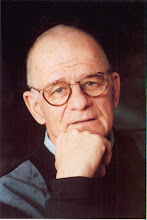What Will It Take to Wake Up These Dogs?
Let’s look at some brands that are in dire need of freshening.
Let’s start with cars. Everyone loves to talk about cars. Is Bob Lutz really shaking up GM advertising? Not yet—but his team recently did put Modernista! on notice and put Cadillac in review. For some reason the trades don’t seem very excited about it.
Who’s going to win VW? We don’t know yet—but the list has narrowed. DDB/New York (my pick) and Wieden got tossed. That leaves Deutsch L.A. and Goodby Silverstein & Partners, S.F. I guess the smart money has moved to Deutsch. Both agencies in recent memory had Saturn as a client, both have had other car accounts. But their cultures are very different.
VW marketing is now helmed by an Italian, Luca De Meo, who for a time ran Fiat and then Alfa Romeo. The automotive press says he’s a bright young car executive with very good instincts and the ability to make up his mind quickly. Expect a decision in the next two to three weeks.
Well enough silly topicality. What about those dowdy matrons hiding in the back of the room, afraid that no one will ask them to dance?
Case No.1: Mitsubishi. When was the last time you saw a memorable TV spot for Mitsubishi? Remember the girl trying to herky jerky in the front seat to some interesting music? Well that was out of Deutsch L.A. 10 years ago. Traffic won the account, previously at BBDO West, a year ago, in a shoot-out with Wong Doody Ignited Minds and DDB. Traffic is a new agency backed by Tom Cordner, previously the creative leader of Team One (Lexus) and investor Bob Farina.
But what have they done? You can be sure that Traffic is frustrated that it hasn’t been able to give the brand a higher profile. If you go to YouTube there are plenty of highly-viewed videos of Mitsubishi’s EVO IX and EVO X. These are so-called drift cars that do zero to 60 in four seconds and are evenly weighted enough so that you can go into a 360 spin without losing control. In other words, an exciting car. Unfortunately, you can’t make TV commercials selling speed and the Mitsubishis for sale are much less exciting cars with names like Lancer and Galant. Anyway Traffic has yet to crack the brief.
Case No.2. Eddie Bauer. When last heard from (in 2008) Eddie Bauer Apparel Stores was a subsidiary of Eddie Bauer Holdings, Inc., a publicly traded company, with stores in North America, Germany and Japan. There were Eddie Bauer Signature Eyewear; Eddie Bauer sponsorships with National Geographic of “Radio Expeditions” on NPR; an Eddie Bauer line of home furnishings with everything you would need to be cozy in a winter cabin, right down to the thick blanket and wool rug; a line of Eddie Bauer mountain bikes launched with Giant Bicycle, Inc.; and the Eddie Bauer Edition line of S.U.V.s from Ford.
Then earlier this year, everything came crashing down when Eddie Bauer filed for Chapter 11 bankruptcy. It is currently waiting for court approval to sell itself to a private equity firm for $200 million. Meanwhile Publicis West in Seattle is no doubt waiting to hear if it’s still the brand’s agency.
If it is able to wiggle out of its financial problems, then much needs to be done before the brand attempts a return to its “adventure roots.” After all, this was the company which invented the quilted down jacket and military down sleeping bag but so what?
There are already plenty of outdoor and/or adventure apparel companies which own the space—many of them doing business either online and/or through a catalog with virtually no brick and mortar stores weighing down their balance sheet. What man or woman who enjoys the outdoors can’t find several L.L. Bean or REI catalogs stuck around on a back shelf somewhere? But of those, how many have ever been to an L.L. Bean or REI store? (If you are in California or Washington, substitute Orvis for REI).
It used to be that Patagonia was just a store for kayakers or mountain climbers. Today their stores are everywhere, selling t-shirts, fleece sweaters and vests, rain jackets and daypacks, all with a lifetime money-back guarantee.
So where will Eddie Bauer fit into this Gore-Tex landscape with a distinctive positioning that make their products stand out? If you could figure out a USP then you could fashion a memorable ad campaign—but it has to be long-running. And the owners will probably have to double their pre-2009 $10 million budget if they hope to make a dent.
Send me your nomination for brands—not dogs without a pulse, but brands which with a little prodding and some energy bars could get back in the game.

